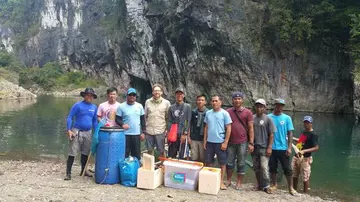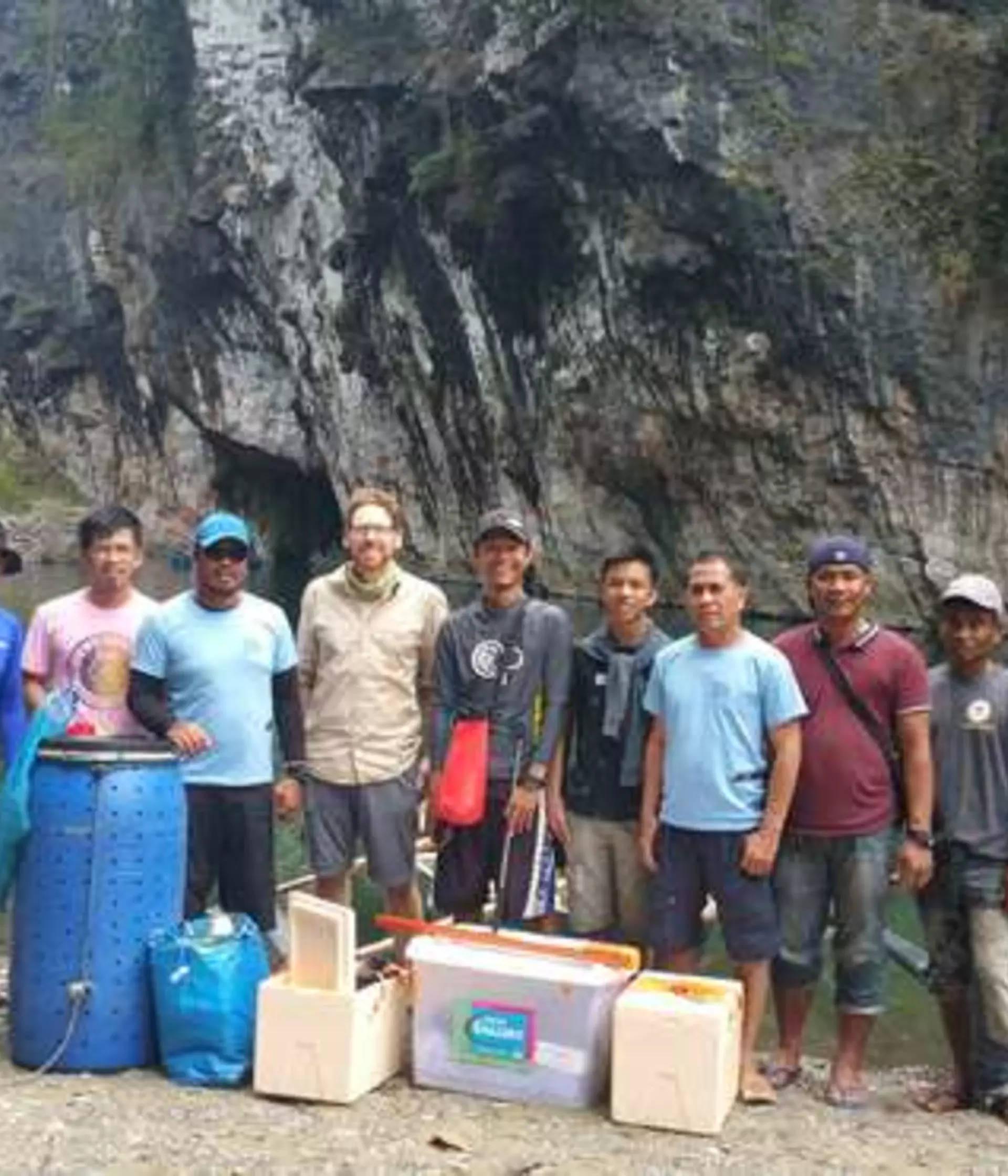
Dr. Adam Piper
Research Fellow
Dr Adam Piper, postdoctoral researcher at the Institute of Zoology, joined the ZSL Freshwater eel conservation project in the Philippines for the initial eel-tagging trip of the project in March 2018.
Whenever protected areas are established, be they aquatic, or terrestrial, it is essential to know that they are achieving their purpose, or else they can become a drain on resources with little benefit. As part of our project based in the north of the Philippines, we established freshwater sanctuaries in collaboration with local communities. One aim of these was to protect flagship species, of which anguillid eels were included. As such, during a recent visit in order to look at the movement of eels at two fish sanctuaries within the Cagayan catchment area, we installed telemetry arrays. The two different sites were chosen to represent notably different habitat types:
- Hot springs fish sanctuary– a narrow channel with steep gradient and series of short, fast flowing pools separated by boulder falls
- Duba fish sanctuary – a wide, deep, slow-flowing channel with undercut cliff banks

By using telemetry methods, we will be able to determine the movement of the eels within and out of the fish sanctuaries. During this trip, we successfully tagged 23 eels (Anguilla marmorata). To build on this work, a second expedition planned for October 2018 will aim to tag a further 30 to 40 individuals.
Additional receivers were also strategically placed at the point where the fish sanctuary channels join the main Cagayan River and further downstream as the river flows in to the sea at Aparri. These receivers will record the passage of tagged eels as they descend the catchment to the sea, with potential to provide information on the timing of the eel’s seaward spawning migration.

A key part of the project is engaging with the local community. So far, local groups including students from local schools, local village (Barangay) officials, fisher folk, local residents, tourist operators and government agencies are already actively engaged with the project and are committed to providing assistance with the installation and maintenance of telemetry arrays and capture of study fish. In addition, these groups have offered to assist with education relating to the study and wider purpose of the fish sanctuaries.
During meetings with local interest groups and officials to discuss the project, fisher folk requested if an additional external mark could be put on the tagged eels so that they could easily identify and return these eels if captured. Accordingly, all tagged eels were marked on their underside with an orange elastomer gel mark. Fishers have also offered to spread the word about the work and to encourage the return of marked eels throughout their network of fishing communities within the wider Cagayan catchment.
From the interest generated during the field studies, the fish sanctuary leads, along with local community leaders and ZSL in country staff, have instigated a number of further local meetings and school visits to continue educating local communities about the eel tracking study and the wider importance of the fish sanctuaries.
This work was kindly funded by the Darwin Initiative.
Find out more about ZSL’s eel conservation work in the Philippines
